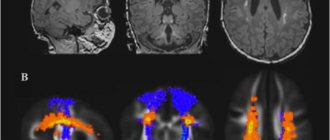The history of auto-training to calm the nervous system
There is a version that auto-training arose quite a long time ago. Back in the 20th century, a neuropsychologist named Oskar Vogt discovered that some of his patients had the ability to independently enter a trance or hypnotic state when they needed it.
From that moment on, relaxation for the nervous system began to rapidly gain momentum. There were many other scientists and psychiatrists who determined the pattern of earlier recovery using similar techniques.
There is also a version that yogis have had the ability to self-soothe themselves since ancient times. This is available to them without the help of auto-training; they cope with such situations using other methods.
But still, the most important person in the history of the development of auto-training is considered to be Johann Heinrich Schultz. He worked as a neurologist in the city of Frankfurt am Main and already in 1936 became the head of the Institute of Psychotherapy. His main work was the therapy of the mentally ill. In those years, he made many discoveries on the topic of relaxation of the nervous system and the system of calming the human psyche.
Schultz published his own work entitled “Autogenic Training,” which was subsequently translated into many foreign languages.
Motivation for auto-training among young people and not only
The percentage of people who engage in auto-training in their young years is very large. This is because getting a higher education has become both easy and difficult.
Everyone can study, but not everyone can pay for education, but they still have to work. And even if we assume that exam results can be bought, it is extremely difficult to work without real knowledge, and even be productive for yourself.
Therefore, many universities also open autogenic training courses for applicants to teach the future student:
- cope with your emotions;
- timely suppress the feeling of fear of ignorance of the subject;
- do not worry in responsible and critical situations;
- find internal reserves of knowledge.
In this sense, young people need to learn to calm their nervous system in moments of crisis, coping with trembling in their voice or fighting the desire to say an offensive word, they will be able to live comfortably for many years without experiencing any nervous shocks.
In addition, school graduates are not yet entirely familiar with the system of education at universities, so a person immediately finds himself:
- surrounded by strangers;
- often in new social and living conditions;
- alone with a sense of responsibility for your future;
- just in an unfamiliar city, not knowing its traditions and customs.
All this affects the development of a young personality, as well as the human nervous system. Therefore, in order to graduate from a higher educational institution and not become a neurasthenic, it is quite useful to engage in auto-training.
Modern meditation schools offer their students classes that are somewhat different from those offered by yoga. But they all have one thing in common: learning to relax and breathe correctly.
And although people always want to go directly to exercises in the lotus position, they have to start with proper breathing.
To begin with, you can simply sit on a chair and, taking a deep breath, make sure that your lungs are completely filled with air. Exhale slowly. At this time, thoughts should be maximally concentrated on breathing, and not soar somewhere in the clouds. During classes, students should understand that the best way to relax is to concentrate, although this sounds paradoxical. Moreover, you will need to focus your thoughts on your arms, legs, and first exclusively on body parts and internal organs.
You can study on your own, with a coach or a friend in the course.
This stage is important, regardless of the purpose for which a person came to auto-training classes. It is an important preparation for more serious exercises to achieve very specific goals and to restore the normal functioning of the nervous system, among other things.
Who is auto-training intended for?
Autotraining has a number of useful properties for every person. There are special complexes aimed specifically at women or men. They have significant differences. But there are also combined sets of exercises that do not differ in their effects on a person by gender.
Contraindications to the use of auto-training:
- serious cardiovascular diseases;
- diseases of the nervous system;
- exacerbation of chronic diseases.
If a person has a stomach ulcer, then he should avoid exercises that require a feeling of warmth in the stomach area. It is necessary to deal with other diseases in the same way, excluding this area from exposure.
Text for reassurance.
Take a comfortable position. Close your eyes. Breathe evenly and calmly.
Imagine that you are in a mountain clearing with an incredibly beautiful view: distant peaks covered with pine needles, gentle slopes, dozens of small mountain streams uniting at the foot into a crystal-clear lake. It reflects the blue skies and snow-white clouds like a mirror.
You deeply and with pleasure inhale the light, transparent mountain air. It fills the lungs and, together with the blood, penetrates every cell of your body. You feel how lightness and purity fill you. Feel the smell of young fresh grass. You touch it with your hands – it’s juicy, bright green.
But a bright forest bird flew past and sat on a branch of a bush growing nearby with unknown berries. This is her world, her home. Just like yours. Here you feel confident and safe. You are calm, balanced, and your thoughts are clear and precise. You know what you should do, where you should move next.
Take a deep breath and open your eyes.
You can choose the texts that suit you using the link:
Where to start relaxing the nervous system
Relaxation of the nervous system should begin with preliminary preparation. To do this, you need to find a free room in which there will be a minimum of extraneous noise and sounds, and there will be no other distractions.
There are people who shed tears during treatment using this technique, cannot calm down and feel extremely depressed. This really happens and this moment passes quickly.
Reviews and comments
You can express your opinion about the article, relaxation exercises, as well as share your own knowledge on the topic and experience, using the comment form.
We also recommend reading:
- Storytelling
- 10 Popular Exercises to Relieve Stress
- Breathing and thinking: a way to calm down in a stressful situation
- Methods of mental self-regulation
- Systematic desensitization method to combat fears
- A little about yoga for the face
- How to develop immunity against stress
- How to sleep and relax more
- How to learn to relax: effective relaxation techniques
- Anger management: a selection of useful materials
- Stress Diary
Key words:1Psychoregulation
Managing muscle tension
To relieve muscle tension, it is good to first take a warm or hot bath with aromatic oils. The hot temperature reduces tension in tense muscles, so the training will be more successful.
To eliminate stress and depression, it is good to perform the following exercises:
- bend the torso to the sides;
- perform several lunges;
- raising your arms up and stretching as high as possible.
Various dances are also good for relieving stress.
What is autogenic training?
Autogenic training is a set of specially selected exercises with which a person can get rid of many obsessive states, balance the nervous system, and ensure the normal functioning of many functions in the body.
Autogenic training can be aimed at relaxation or, conversely, at restoring energy balance. The disadvantage of this technique is that not all people can complete the course to the very end. Many people quit exercises before reaching the middle of the cycle, because they do not notice the results from the very first sessions. However, a person can observe the result only towards the end of the cycle.
In some cases, it is advisable to use this technique in combination with medications or other training. But this point must be clarified with your doctor.
This is what is happening to me...
You have obvious problems with your nerves and need to calm your nervous system if any of the following signs are present:
- you are tormented by worry or anxiety for any reason;
- suddenly you became indifferent to everything that made up the meaning of life;
- for some reason any emotions stopped visiting you;
- you stopped believing in yourself and in yourself;
- you have neither the strength nor the desire to communicate;
- try to quickly lock yourself at home, curl up on the couch and turn off your phone;
- Everything irritates you, infuriates you, and leads you to helpless attacks of rage;
- For some reason you are tempted to start a scandal or hysteria out of nowhere;
- you sleep poorly, eat incorrectly, sometimes overeating, sometimes completely losing your appetite.
If you find several such abnormalities in yourself, this means that your nervous system is out of order and needs urgent repair and restoration. People say that nerve cells do not regenerate. Don’t believe the people: in the human body, all cells are constantly restored and renewed.
Restoring the nervous system is not an easy task, but it is possible if you take an integrated approach.
Dynamics of the autogenic state
In dynamics, a person cannot always assess his condition objectively. Therefore, most often for this purpose people resort to the help of someone close to them or a professional. However, you can independently assess your own condition by observing processes in dynamics.
Autogenic training according to Schulz
Schultz argued that the mechanisms of hypnosis and self-hypnosis are almost completely identical, therefore autogenic training according to his system was structured as follows. The creation of special conditions was considered a prerequisite for its correct implementation. He included these conditions:
- absence of extraneous sounds in the room;
- lighting in the room should be moderate, not too bright;
- lack of distractions;
- The room temperature should not be too hot or cold.
A prerequisite must be the presence of motivation and confidence in the control of one’s actions.
The Schultz training itself is carried out as follows:
- the first exercise is to repeat some previously prepared phrases like “I am completely calm”, the duration of this exercise is about 40 seconds;
- Then you should repeat to yourself: “My hand is getting heavier,” then about the other hand, about the rest of the limbs;
- combine the first and second parts of the exercise;
- add phrases about legs, about the calmness and heaviness of legs and arms;
- connect the previous phrases together.
The duration of each subsection in the exercise varies from approximately 40 to 60 seconds. This complex should be repeated for at least 5 days.
This complex for nervous relaxation is considered initial and can be used by anyone, even the unprepared. If a person has certain skills in relaxing the nervous system, then he can somewhat improve the Schultz complex using his second complex.
It is carried out in a similar way, only the phrases included in it contain the following words: “My heart beats calmly”, “I emit warmth and light” and the like.
Three execution techniques
Meditation does not require special equipment or effort of concentration. As a rule, it is performed while sitting with your eyes closed.
Breathing exercises
A brain that receives a sufficient amount of oxygen works more efficiently, which means that the decisions a practitioner makes become more balanced.
- Prepare a practice area.
- Find a comfortable position and close your eyes.
- Watch every inhalation and exhalation, trying to keep them smooth and deep.
- Relax all the muscles in your body.
- When all unpleasant emotions go away, slowly take a deep breath and open your eyes.
After completing your meditation, do not make sudden movements. Allow yourself to integrate into current affairs in a measured way. Meditation practice is good for beginners, as it is easy to perform and allows you to regain a sense of peace and harmony. The functions of the respiratory system return to normal, which has a positive effect on brain function.
Audio recordings
A good solution for those who have just come to the practice would be audio meditation. All you need is any device that can play the recording. You can practice in transport, walking in the park, at work or school, lying in the bathroom. In a public place you can listen to recordings using headphones. If they are accompanied by instructions from the speaker for any actions, it is better to do it at home so as not to disrupt the structure of the practice.
Calming Meditation:
Calm your nerves in 8 minutes:
Visualization
Visualization is a very powerful tool that has a beneficial effect on the practitioner. The essence of this method is to imagine an object that generates pleasant experiences in the brain and transfers them to real life. Such meditation allows you to heal the nervous system, restores harmony, eliminates illnesses, and restores harmony of body and mind. We recommend! The most popular meditation course for beginners in Russian. More than 100 thousand people have already learned to meditate. Try it yourself. Read more.
Technique:
- Prepare your practice room.
- Position your body in a comfortable position.
- Relax your body and focus on your breathing.
- Clearly visualize what you sincerely strive for.
- Allow the emotions of joy, happiness, and calm to take over you.
- To complete the practice, take a deep breath and open your eyes.
When practicing visualization meditation, try to see not an abstract image, but a real picture that you sincerely strive for. In order to achieve harmony, imagine a place where you feel good and calm: the sea coast, mountain peaks, forest clearing. Your place should be secluded, away from the hustle and bustle and people.
Relaxation before bed
- Lying on your back, build a comfortable body position, take full breaths and exhales through your nose.
- As you inhale, allow your belly to rise so that your navel rises up; as you exhale, it should fall naturally.
- Feel the reliable support under your body. The floor or bed supports you, lean your whole body on it.
- Inspect all parts of the body with your inner gaze, relaxing them. Your body becomes soft and pliable and heavy.
- Continue to immerse yourself in a state of calm and tranquility deeper and deeper.
- Release tension from the muscles of your face and neck.
- If your inner gaze detects tension in any part of the body, as you exhale, feel how it comes out along with the air.
- Allow yourself to remain in this healing state that restores soul, body, mind
- When you feel that the time has come, smoothly exit the practice.
- Take a closer look at what transformations happened to you after practice. Meditate daily, this will help you learn to quickly enter a state of relaxation.
Meditation practice is the best way to relieve stress and tension accumulated during the day. By devoting time to meditation every day, you will see how much the quality of your life has changed. She was painted with harmony and joy, happiness and peace.
According to Vladimir Levi
Levy's nervous system relaxation program includes a set of exercises that are performed regularly for 15 weeks. After the course, most people note a significant improvement in their well-being and the disappearance of previous symptoms.
Autogenic training has many differences from hypnosis. It is accessible to many people and some are pleased to know that they can independently regulate the direction and purpose of the exercises. Whereas during hypnosis they are controlled by the mind of another person.









